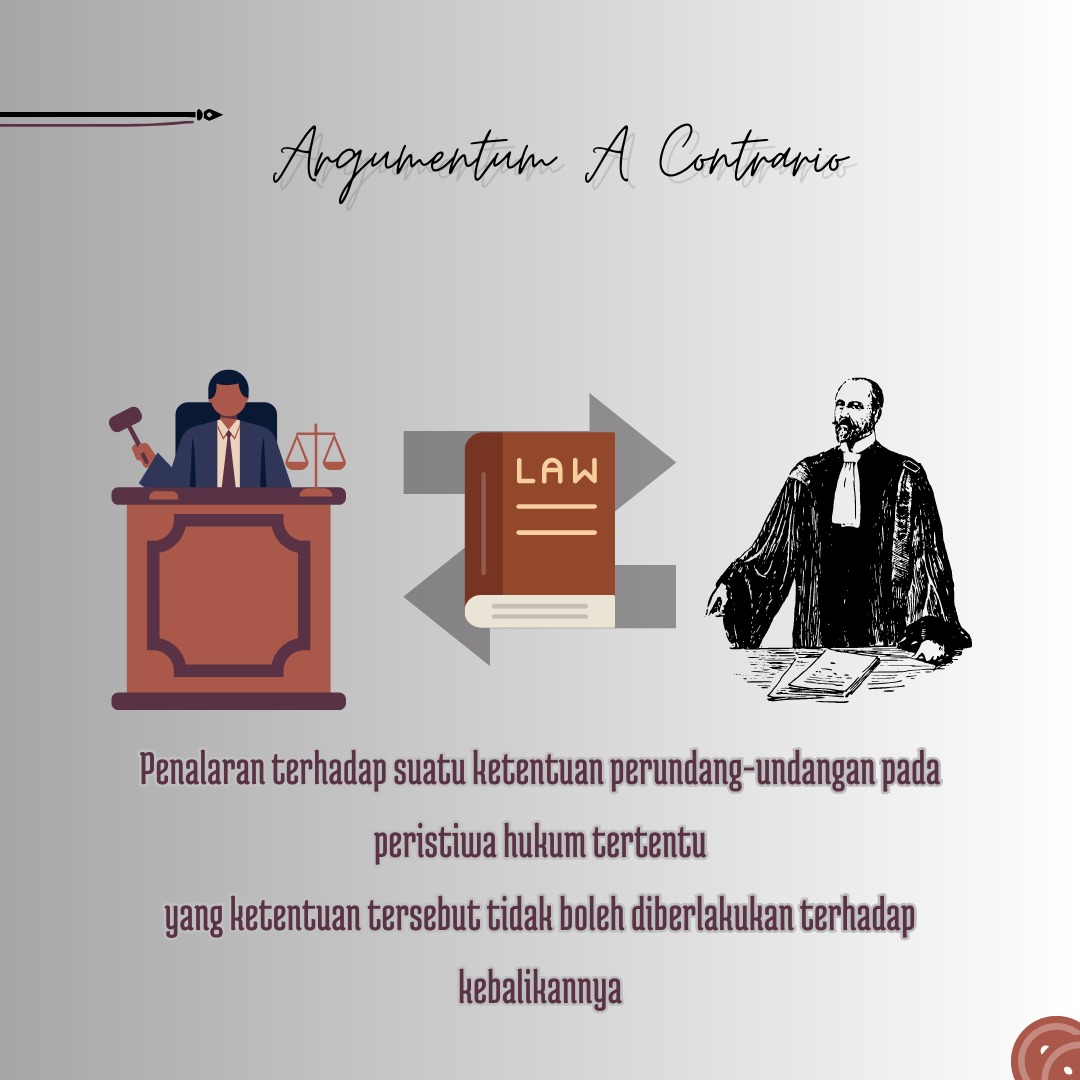
Legal discovery, or rechtsvinding, must be carried out by a judge when the law is not specific or clear in deciding a case. Furthermore, Article 10 paragraph (1) of the Judicial Power Law states that a judge is prohibited from rejecting a case. The findings (legal) then become law or a reference for the judge, or in other words, jurisprudence. One legal discovery that uses reasoning is Argumentum a contrario.
Argumentum a contrario, often called a contrario, is interpreting or explaining a law based on the contrasting understandings between the concrete events encountered and the events regulated in the law.
Understanding the Interpretation of Opposite Disclosure
In relation to the question posed, interpreting a law in a contradictory manner is also known as argumentum a contrario. In this regard, R. Soeroso's book, "Introduction to Legal Science" (p. 115), states that
interpretation a contrario is an interpretation of a law based on denial, meaning a contradiction between the question at hand and the question regulated in a particular article of the law.
R. Soeroso further explained that this denial was based on the conclusion that the problem at hand was not included in the article in question, the problem was outside the scope of statutory regulations.
Meanwhile, Sudikno Mertokusumo explained that a contrario emphasizes the dissimilarity of events. Sometimes, an event is not specifically regulated by law, but the opposite event is regulated in law. Here, there are no regulations specifically provided for the event for which the law is being sought. Instead, there are regulations specifically provided for another event that is not identical but has elements of similarity to the event for which the law is being sought.
Furthermore, an a contrario interpretation is essentially the same as an analogical interpretation, only with the opposite result. Analogy yields positive results, while an a contrario interpretation yields negative results. An interpretation based on the argumentum a contrario narrows the formulation of law or legislation. The goal is to further emphasize legal certainty and avoid doubt. Also, as we previously noted, criminal law does not recognize analogy due to Article 1, paragraph 1 of the Indonesian Criminal Code. Although, as Pompe states, analogy is not prohibited, it still refers to the judge.
The difference between using laws by analogy and based on argumentum a contrario is:
• Using the law by analogy yields positive results; while argumentum a contrario yields negative results.
• Using the law by analogy means expanding the validity of legal provisions or statutory regulations; while using a contrario means narrowing the validity of statutory provisions.
The equivalent of using the law analogously and based on argumentum a contrario is:
The use of law by analogy and argumentum a contrario are both based on legal construction. Both methods can be used to resolve a problem. Both methods are applied when the article in the legislation does not address the problem at hand. The intent and purpose of both methods is to fill gaps in the law.
Example of Interpretation of Argumentum A Contrario
Article 34 of the Civil Code states that a woman is not permitted to remarry before a certain period of time, namely 300 days after her divorce from her husband. Based on the argument a contrario (conversely), this provision does not apply to men. According to the principles of civil law (European), a woman must wait until 300 days have passed, whereas Islamic law recognizes the iddah period as 100 days, or four times the period of purity, due to concerns that during this period, the child's inheritance from the previous husband may still be present. If a woman marries before the iddah period has elapsed, the status of any children born to the next husband remains unclear.
Finally, from the descriptions above, it can be concluded that:
According to the new (modern) view, existing law is incomplete and cannot encompass all legal events that arise in society. Therefore, judges participate in discovering the law, which Professor Paul Schalten describes as "judges exercising Recht vinding."
Although judges help to find the law, they are not legislative.
In other words, based on the argumentum a contrario (contrary), it can be said that this provision does not apply to men because the issue at hand is not covered by that article. Article 34 of the Civil Code,
does not mention anything about men but is specifically directed at women.
Another example: the definition of a lawful cause, as regulated in Article 1320 of the Civil Code, is not explained in detail or specifically. However, Article 1337 of the Civil Code defines prohibited causes as those that conflict with law, morality, and public order. Therefore, a contrario, it can be concluded that a lawful cause is one that does not conflict with law, morality, or public order.